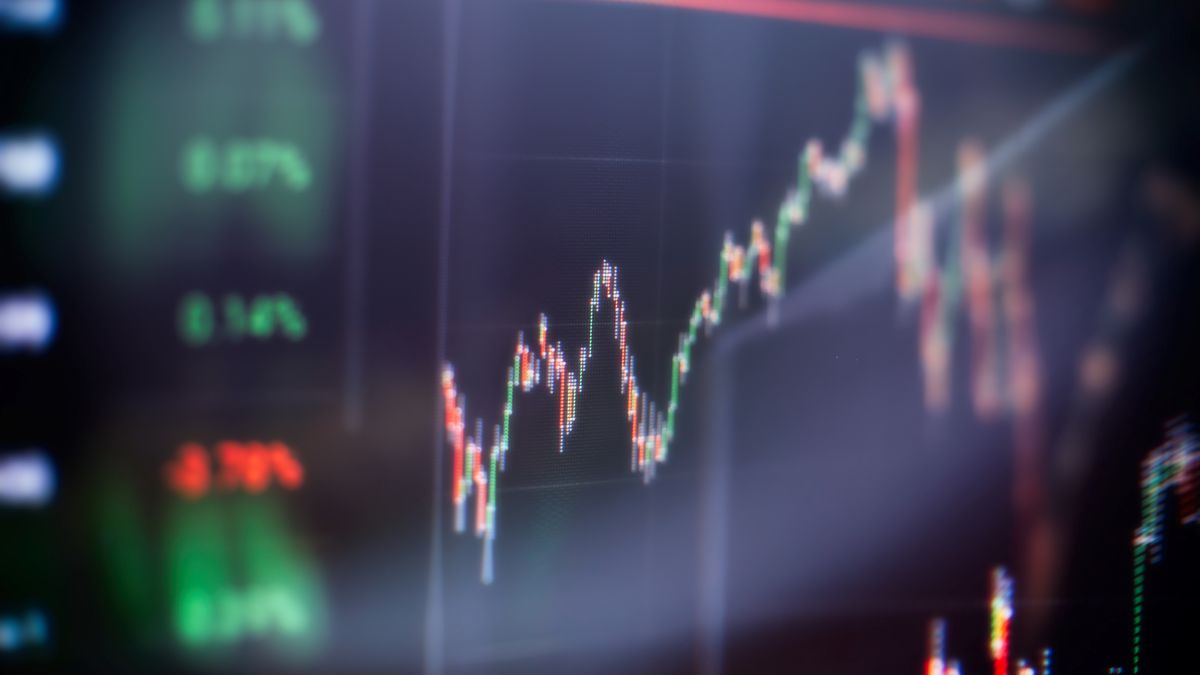Thus, the country risk measured by JPMorgan climbed 3% to 2,095 basis points (it reached a daily peak of 2,117 points), the highest level in almost three weeks. In just two days, it accumulated a jump of 6.9% after ending February at 1,960 points.
“Dollar bonds were affected by the rise in the longest rate in the US. But they do not have a defined trend. They are lateralizing. Until the doubts about the supposed local debt swap that is coming are cleared up, it seems to me that they will continue like this without course”commented to Ambit Augusto Darget, President of Silver Cloud Advisors.
As this medium anticipated the week before, the Government seeks to reschedule debt maturities in pesos for the second quarter for 2024 and 2025. The talks began a couple of weeks ago and in the last hours some proposals were made known that could be in the table.
For Javier Casabalfixed income strategist at Adcap Grupo Financiero “Sovereign bonds are moving in step with their emerging peers, making highs and lows at the same time. However, the level obeys an internal dynamic. Argentina operates with a very large beta, it goes up a lot when the global market turns positive and corrects strongly when the market turns negative”.
For now, emerging bonds “They seem to be finding a floor at current levels. Based on this level, we can think that sovereigns are close to a floor as well around $33 for Global 2038,” added in dialogue with this newspaper.
Within the framework of an agreement with the IMF in 2022the Government is also negotiating a reduction in the required volume of reserves from the Central Bank (BCRA), at a time when the drought in the countryside complicates the liquidation of dollars.
“The relationship of investors with Argentina is rare. They do not understand why the country does not do what has to be done (…) When they see Argentina, they see it more as a sociological-political problem rather than I think the same thing: we have a political problem,” said Javier Timerman, a partner at Adcap Grupo Financiero.
Market agents added that it also works against the bad mood of the foreign bondholders who accepted the Argentine debt swaps, who They question certain new freedoms provided by the IMF towards Argentina and warn about the impact on the levels of country risk.
In an adverse context for Argentine finances, everything is further complicated by the projection of a new interest rate hike by the US Federal Reserve (Fed). “Concern about rising rates was revived, negatively impacting the Treasury bond yield curve, especially in the short tranche. In this way, the two-year rate rose to the maximum value since 2007,” They argued from Cohen.
The yield on 10-year notes – the benchmark for global borrowing costs – broke above the 4% level on Thursdayreaching a new four-month high of 4.075% (up 8 basis points). Two-year paper, which better reflects short-term interest rate expectations, hit a new 15-year maximum, standing at 4.944%. Longer-term, the 30-year yield also topped 4% for the first time since mid-November last year, standing at 4.023%.
The rise in rates in the US comes after it became known that the US labor market showed better figures than expected. The number of Americans filing new claims for unemployment benefits fell again last week, according to a Labor Department report that pointed to sustained labor market strength, while another report showed that US labor costs rose faster than initially thought in the fourth quarter.
This revives fears that the US central bank will maintain its aggressive stance for longer.
Expectations that the Fed will have to raise rates 50 basis points at its next meeting this month remained around 30%, according to data from CME Group. The probability that the cost of credit, currently at the 4.5-4.75% level, will advance to 4.75-5% was around 70%.
Atlanta Federal Reserve President Raphael Bostic said Thursday near the close of markets that he favored quarter-point rate hikes as the economy has yet to fully feel the impact of higher rates. .
For his part, dollar-linked peso bonds continued to concentrate volume in the long tranche, with TV24 gaining 2%, as reported in a report by the SBS Group. Meanwhile, the duals closed with average increases of 0.3%, highlighting the long tranche (+0.5%). As for the CER segment, the short Leceres and Bonceres rose 0.4%, while the long Bonceres segment gained 1.5%.
S&P Merval and ADRs on Wall Street
In the Buenos Aires stock market, the index S&P Merval it lost 2.7%, to 242,748.91 points, in a round where energy papers were in the investment sights after a huge blackout that the country endured in the last hours. With the significant rise in the CCL dollar, the leading panel measured with this exchange rate fell 3.7%.
The most salient setbacks of the day were recorded by the shares of Cresud (-5.7%); Transportadora de Gas del Norte (-5.4%); Galicia Financial Group (-5.1%); Macro Bank (-5%); and Telecom (-4.6%). Only Transener’s papers ended with gains (+2.8%); Agrometal (+2.3%), Aluar (+2%); and Loma Negra (+0.8%).
Ch$10.900 million in equities were negotiated, of which Ch$3,590.7 million were for shares (rest of Cedears).
In turn, the Argentine ADRs that operate on Wall Street closed with a majority of decreases, of up to more than 7%, thanks to Telecom (-7.1%); Galicia Financial Group (-7%); Banco Macro (+6.9%); Central Port (-6.7%); and Cresud (-6.6%). Instead, Bunge advanced (+2.5%); Tenaris (+2.3%); Ternium (+1.7%); Free Market (+0.8%); Globant (+0.6%); and Bioceres (+0.3%).
After starting the day mostly down, the Dow Jones Industrial Average rose 1.1%, the S&P 500 added 0.8%, while eThe Nasdaq Composite rose 0.7%. It was after Treasury yields eased from highs following Bostic’s comments about his preference to raise interest rates by the central bank.
Against this backdrop, Salesforce soared 11.5% after the cloud-based software firm forecast first-quarter revenue above analyst estimates and doubled its share buyback to $20 billion.
In addition, Macy’s gained 11.1% after the department store operator forecast full-year profit above Wall Street estimates.
Instead, Tesla declined 5.6% after a four-hour presentation by its chief executive, Elon Musk, and his team failed to impress investors, with few details about their plan to introduce an affordable electric vehicle.
Source: Ambito
I am a 24-year-old writer and journalist who has been working in the news industry for the past two years. I write primarily about market news, so if you’re looking for insights into what’s going on in the stock market or economic indicators, you’ve come to the right place. I also dabble in writing articles on lifestyle trends and pop culture news.




